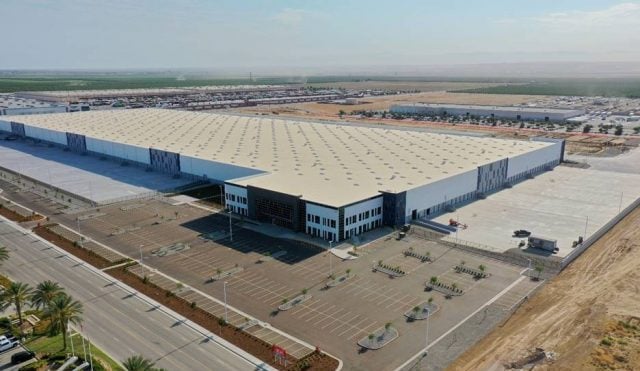LOS ANGELES—Creative office is certainly the biggest trend to hit the office market in decades, and it has evolved to dominate the sector. Some office property owners, however, are hesitant to use the term “creative office” even for creative-style spaces. While this is in part because creative office got its start catering to creative tenants, the term “creative office” has also become a banal term for a wide range of open floor plan office space. Property owners—including the Souferian Group's Be and Breather—think the term “creative office” isn't unique enough for high-end creative spaces. To get a closer look at the creative office market, we sat down with Marty Caverly, CIO of Resource Innovation Office REIT and an office market expert to talk about how creative office has evolved and why some property owners are eschewing the term.
GlobeSt.com: How has the term “creative office” changed? What does this type of office space include today?
Marty Caverly: Originally, creative office was the domain of tech companies who either converted or purpose-built buildings with large floor plans and plenty of window lines to facilitate open plan seating areas and other amenities like study areas, many different types of conference rooms, eating and dining areas, and outside space.
Today that type of space planning is often not enough. You also need to be in the right location, which generally means the right city and neighborhood. You also need great amenity packages to match your great location. Right now, location is so important that in some cases, people are willing to give up some of the original concepts of creative office in order to be at the right location.
GlobeSt.com: How is the L.A. market adopting open office?
Caverly: Throughout the L.A. Basin companies are ripping out non-glass walls, cubes, drop ceilings and carpets and replacing these with plenty of glass, natural light, large open staircases that connect floors better than elevators, and wherever possible, access to outside space. We are seeing this across the spectrum of industries, not just among the typical creative tenants in technology. For example, the law firm Morrison Forester ripped out their law library and it's now a bar with meeting rooms and collaborative space. CBRE recently opened an office in Glendale where no one has an assigned office, everything is paperless, and there is a concierge service.
GlobeSt.com: Why do some office owners want to avoid the term “creative office”?
Caverly: In some cases it's a fear that this is a fad, which it is definitely not, and in other cases it is a similar misconception that creative tenants are just start-ups with no credit. Again, we are seeing Fortune 500 tenants move toward creative space. Likewise there has been recent criticism that open plans make it difficult for people to work and concentrate. That's just not true if the space is designed well enough and the need for collaboration in your company is real.
GlobeSt.com: How can these owners avoid the criticisms of creative office?
Caverly: I think the proof is in the pudding—creative office buildings have better rental and occupancy rates in most cities, but to build great creative office, the key is to focus on the team, not the individual when planning a workspace. Today's workers have different needs and therefore, need different spaces, so the key is to give employees options. Don't assign individual offices. Instead have plenty of private rooms available for use when needed. Offer employees a mix of environments such as private workspaces, collaborative workspaces and “buzzy” socialization areas. This allows the office to accommodate employees with various needs and helps eliminate the noise and privacy issues, without stifling collaboration.
GlobeSt.com: What are the design elements that are becoming popular, and how can owners match form to function?
Caverly: As noted above, one issue Gensler and many other groups are working on is getting the right balance of private space and public space to ensure maximum collaboration and productivity. Most of this has to do with sound attenuation. In a well-designed creative office, the buzz of a high-energy, creative meeting in a collaborative space won't affect someone who's working on a difficult task in a private space. Again, the key is to create a space that works for different people doing different tasks.
Beyond pure design considerations, companies need to think of their office as an extension of their brand. Traditional office often reflects poorly on a brand because long, office-filled hallways and floors filled with cubes make for an isolating experience. As the labor market tightens, companies who can leverage their office space as a recruiting tool have intrinsic advantages when it comes to hiring and retaining talent. In fact, 75% of workers say they are more likely to stay at their current company if it has an inspiring office space.
It's important to match the location of the office to the lifestyle of your talent pool. Keep in mind that millennials and the creative class want access to public transportation, authentic aesthetics and walkable neighborhoods with restaurants, entertainment and nightlife. Where an office is located is as important as its design.
The best creative offices excel in all three areas, matching office form and design to function, matching company branding to office aesthetics, and matching location to the talent pool's lifestyle.
GlobeSt.com: Which industries are switching to open office layouts?
Caverly: We are seeing companies making the switch across every major sector. Office is changing because people and companies are changing. As more people work remotely and collaboration becomes increasingly critical, flat, open spaces become more desirable. Many companies also see creative office designs as a way to promote creativity, eliminate organizational silos and get people thinking beyond the mantra of “this is how we've always done it.”
LOS ANGELES—Creative office is certainly the biggest trend to hit the office market in decades, and it has evolved to dominate the sector. Some office property owners, however, are hesitant to use the term “creative office” even for creative-style spaces. While this is in part because creative office got its start catering to creative tenants, the term “creative office” has also become a banal term for a wide range of open floor plan office space. Property owners—including the Souferian Group's Be and Breather—think the term “creative office” isn't unique enough for high-end creative spaces. To get a closer look at the creative office market, we sat down with Marty Caverly, CIO of Resource Innovation Office REIT and an office market expert to talk about how creative office has evolved and why some property owners are eschewing the term.
GlobeSt.com: How has the term “creative office” changed? What does this type of office space include today?
Marty Caverly: Originally, creative office was the domain of tech companies who either converted or purpose-built buildings with large floor plans and plenty of window lines to facilitate open plan seating areas and other amenities like study areas, many different types of conference rooms, eating and dining areas, and outside space.
Today that type of space planning is often not enough. You also need to be in the right location, which generally means the right city and neighborhood. You also need great amenity packages to match your great location. Right now, location is so important that in some cases, people are willing to give up some of the original concepts of creative office in order to be at the right location.
GlobeSt.com: How is the L.A. market adopting open office?
Caverly: Throughout the L.A. Basin companies are ripping out non-glass walls, cubes, drop ceilings and carpets and replacing these with plenty of glass, natural light, large open staircases that connect floors better than elevators, and wherever possible, access to outside space. We are seeing this across the spectrum of industries, not just among the typical creative tenants in technology. For example, the law firm
GlobeSt.com: Why do some office owners want to avoid the term “creative office”?
Caverly: In some cases it's a fear that this is a fad, which it is definitely not, and in other cases it is a similar misconception that creative tenants are just start-ups with no credit. Again, we are seeing Fortune 500 tenants move toward creative space. Likewise there has been recent criticism that open plans make it difficult for people to work and concentrate. That's just not true if the space is designed well enough and the need for collaboration in your company is real.
GlobeSt.com: How can these owners avoid the criticisms of creative office?
Caverly: I think the proof is in the pudding—creative office buildings have better rental and occupancy rates in most cities, but to build great creative office, the key is to focus on the team, not the individual when planning a workspace. Today's workers have different needs and therefore, need different spaces, so the key is to give employees options. Don't assign individual offices. Instead have plenty of private rooms available for use when needed. Offer employees a mix of environments such as private workspaces, collaborative workspaces and “buzzy” socialization areas. This allows the office to accommodate employees with various needs and helps eliminate the noise and privacy issues, without stifling collaboration.
GlobeSt.com: What are the design elements that are becoming popular, and how can owners match form to function?
Caverly: As noted above, one issue Gensler and many other groups are working on is getting the right balance of private space and public space to ensure maximum collaboration and productivity. Most of this has to do with sound attenuation. In a well-designed creative office, the buzz of a high-energy, creative meeting in a collaborative space won't affect someone who's working on a difficult task in a private space. Again, the key is to create a space that works for different people doing different tasks.
Beyond pure design considerations, companies need to think of their office as an extension of their brand. Traditional office often reflects poorly on a brand because long, office-filled hallways and floors filled with cubes make for an isolating experience. As the labor market tightens, companies who can leverage their office space as a recruiting tool have intrinsic advantages when it comes to hiring and retaining talent. In fact, 75% of workers say they are more likely to stay at their current company if it has an inspiring office space.
It's important to match the location of the office to the lifestyle of your talent pool. Keep in mind that millennials and the creative class want access to public transportation, authentic aesthetics and walkable neighborhoods with restaurants, entertainment and nightlife. Where an office is located is as important as its design.
The best creative offices excel in all three areas, matching office form and design to function, matching company branding to office aesthetics, and matching location to the talent pool's lifestyle.
GlobeSt.com: Which industries are switching to open office layouts?
Caverly: We are seeing companies making the switch across every major sector. Office is changing because people and companies are changing. As more people work remotely and collaboration becomes increasingly critical, flat, open spaces become more desirable. Many companies also see creative office designs as a way to promote creativity, eliminate organizational silos and get people thinking beyond the mantra of “this is how we've always done it.”
Want to continue reading?
Become a Free ALM Digital Reader.
Once you are an ALM Digital Member, you’ll receive:
- Breaking commercial real estate news and analysis, on-site and via our newsletters and custom alerts
- Educational webcasts, white papers, and ebooks from industry thought leaders
- Critical coverage of the property casualty insurance and financial advisory markets on our other ALM sites, PropertyCasualty360 and ThinkAdvisor
Already have an account? Sign In Now
*May exclude premium content© 2024 ALM Global, LLC, All Rights Reserved. Request academic re-use from www.copyright.com. All other uses, submit a request to [email protected]. For more information visit Asset & Logo Licensing.









